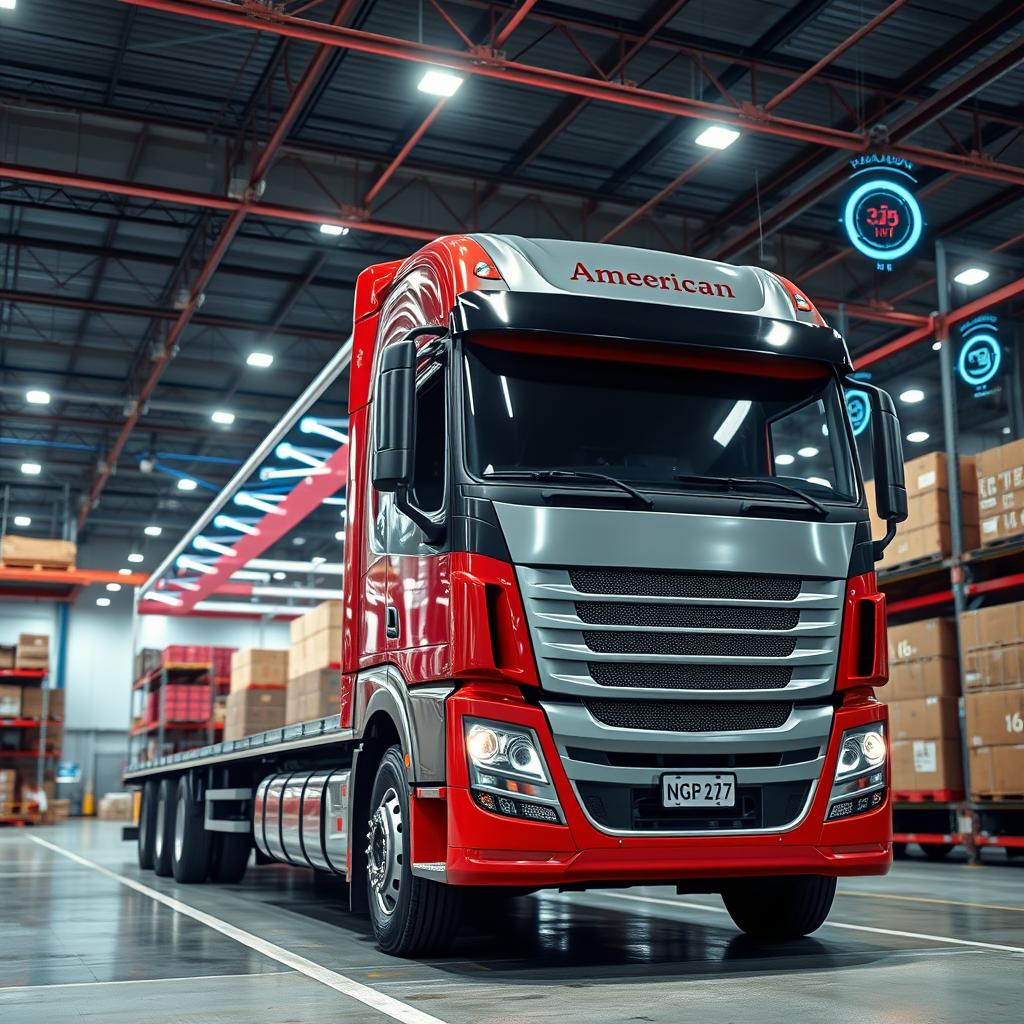IoT in American Trucking: Transforming Logistics
The role of IoT in American trucking has revolutionized the logistics industry, creating unprecedented opportunities for efficiency, safety, and cost reduction. As we venture deeper into the digital age, the integration of Internet of Things (IoT) technology is reshaping how trucking companies operate, monitor their fleets, and deliver goods across the vast American landscape. This transformation is not just about adding new technology – it’s about fundamentally changing how the entire industry functions.
Understanding IoT in the Trucking Industry
The Internet of Things represents a network of interconnected devices that collect, transmit, and analyze data in real-time. In trucking, this technology encompasses everything from GPS tracking systems to engine performance monitors and temperature sensors. According to recent studies by the American Transportation Research Institute, companies implementing IoT solutions have seen up to 30% improvement in operational efficiency.
IoT devices in trucking can include:
- GPS tracking systems
- Engine diagnostic sensors
- Temperature monitoring devices
- Tire pressure sensors
- Fuel consumption monitors
- Driver behavior tracking systems
These interconnected systems work together to create a comprehensive fleet management solution that provides real-time insights and actionable data.
Key Benefits of IoT Implementation in Trucking
Enhanced Safety and Security
Safety remains a top priority in the trucking industry, and IoT technology has dramatically improved how companies monitor and maintain their fleet’s safety standards. Advanced driver assistance systems (ADAS) powered by IoT sensors help prevent accidents by:
- Monitoring driver alertness
- Providing lane departure warnings
- Offering automatic emergency braking
- Detecting potential collision risks
Improved Fleet Management
Real-time fleet monitoring has become increasingly sophisticated through IoT implementation. Fleet managers can now:
– Track vehicle location and status in real-time
– Monitor fuel consumption patterns
– Schedule preventive maintenance
– Optimize route planning
– Manage driver schedules more effectively
Cost Reduction and Efficiency
The financial benefits of IoT integration are substantial. Companies implementing comprehensive IoT solutions have reported:
– 20-30% reduction in fuel costs
– 15-25% decrease in maintenance expenses
– Up to 40% improvement in asset utilization
– Significant reduction in insurance premiums
Real-Time Fleet Monitoring and Predictive Maintenance
One of the most significant advantages of IoT in trucking is the ability to predict and prevent mechanical issues before they cause breakdowns. Sensors continuously monitor:
- Engine performance metrics
- Tire pressure and wear
- Brake system status
- Oil levels and quality
- Battery health
This data is analyzed using advanced algorithms to predict potential failures and schedule maintenance accordingly, reducing downtime and extending vehicle lifespan.
Environmental Impact and Sustainability
IoT technology is playing a crucial role in making the trucking industry more environmentally friendly. Through precise monitoring and optimization of:
- Route efficiency
- Idle time reduction
- Fuel consumption optimization
- Carbon footprint tracking
Companies can significantly reduce their environmental impact while maintaining operational efficiency. Studies show that IoT-enabled fleet management can reduce carbon emissions by up to 25%.
Implementation Challenges and Solutions
While the benefits of IoT in trucking are clear, implementation can present certain challenges:
Initial Investment
The upfront cost of IoT implementation can be significant. However, the return on investment typically becomes evident within 12-18 months through:
– Reduced operational costs
– Improved efficiency
– Lower maintenance expenses
– Enhanced safety performance
Data Security
Protecting sensitive data is crucial. Companies must invest in:
– Robust cybersecurity measures
– Regular security audits
– Employee training programs
– Compliance monitoring systems
Integration with Existing Systems
Seamless integration with current infrastructure requires:
– Careful planning
– Phased implementation
– Compatible hardware selection
– Comprehensive staff training
Future Trends and Innovations
The future of IoT in American trucking looks promising, with several emerging trends:
Autonomous Vehicles: Integration of IoT with autonomous driving technology is advancing rapidly, promising even greater efficiency and safety improvements.
5G Connectivity: The rollout of 5G networks will enable faster, more reliable data transmission and real-time decision-making capabilities.
Artificial Intelligence Integration: AI-powered analytics will provide even more sophisticated predictive maintenance and route optimization capabilities.
Conclusion
The role of IoT in American trucking continues to evolve and expand, offering unprecedented opportunities for improvement in safety, efficiency, and sustainability. As technology advances, the benefits of IoT implementation become increasingly apparent, making it an essential investment for companies looking to remain competitive in the modern logistics landscape.
At MovEx, we understand the importance of staying ahead of technological advancements in the trucking industry. Our team of experts can help you navigate the implementation of IoT solutions tailored to your specific needs. Contact us at +1 513 7884050 or visit www.movex.group to learn how we can help transform your trucking operations with cutting-edge IoT solutions. Let’s work together to build a more efficient, safer, and sustainable future for American trucking.







